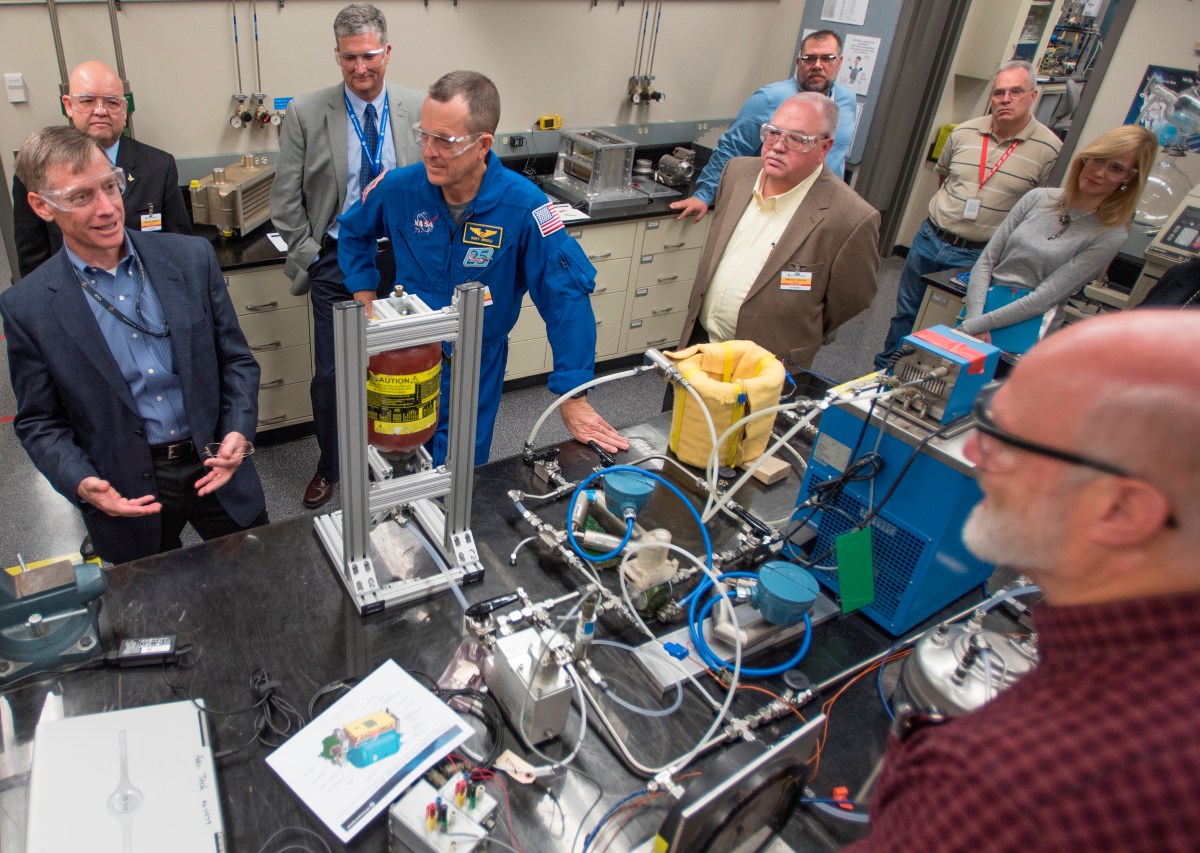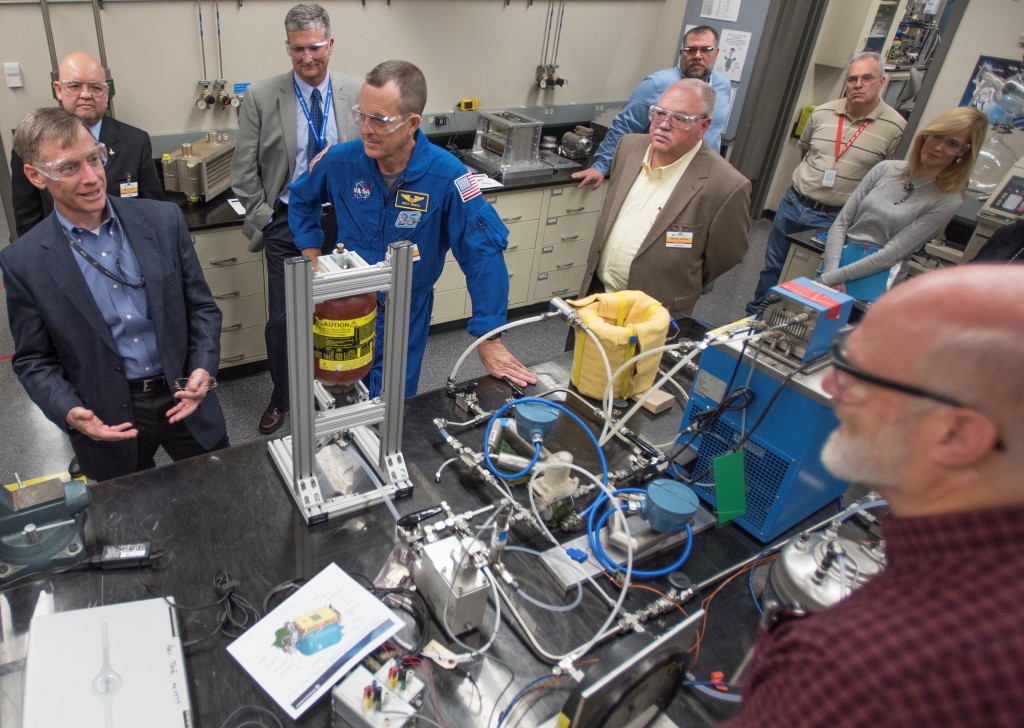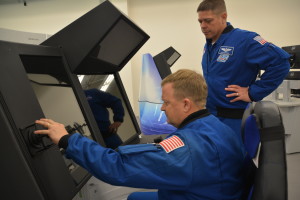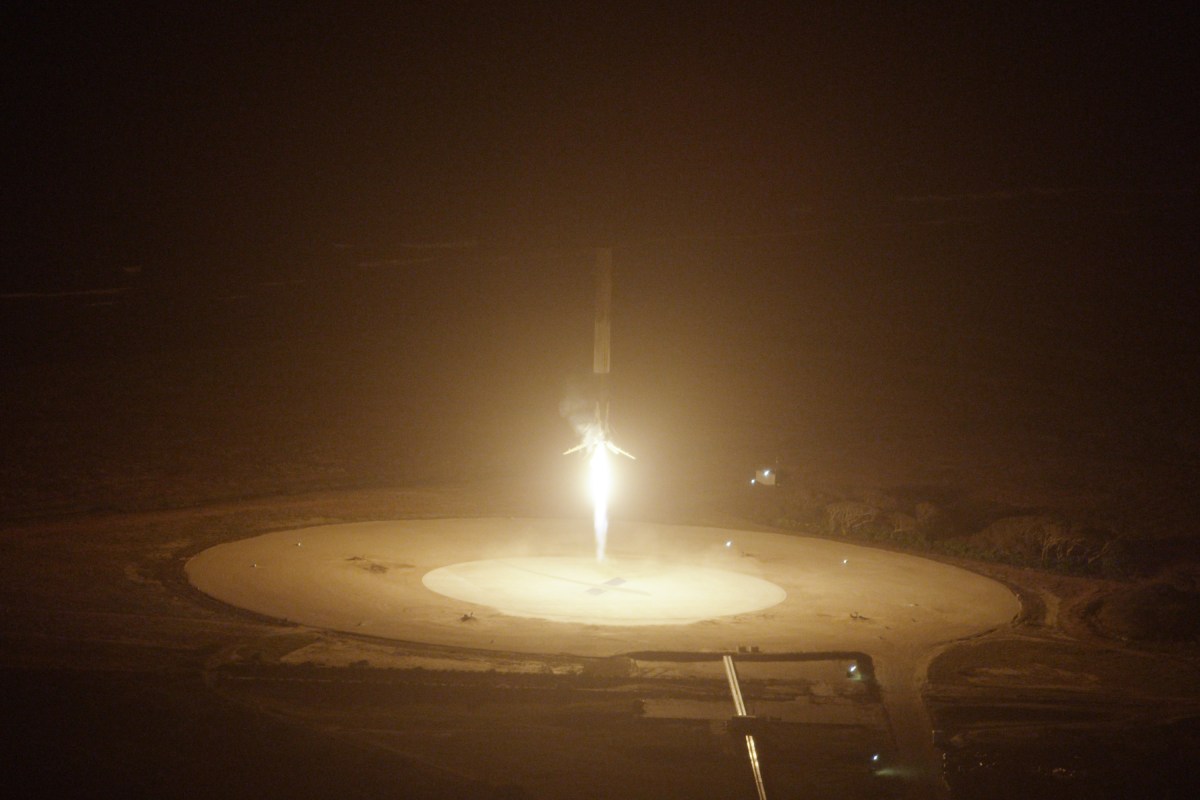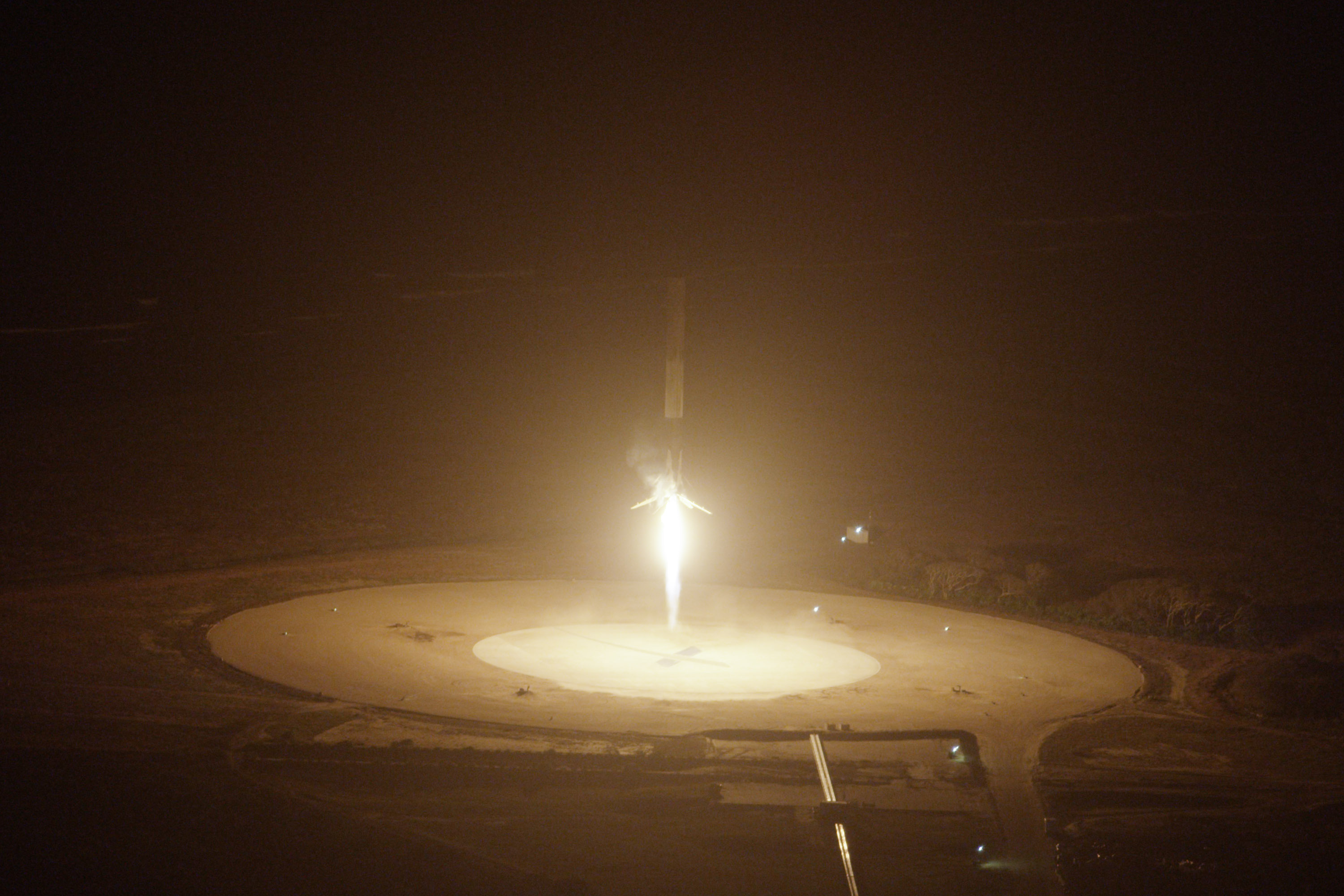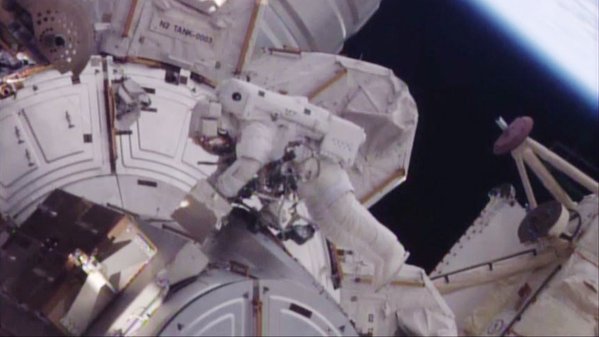 A critical piece of large equipment is being tested at Launch Complex 39A this week as SpaceX raises and lowers the transporter erector that will be used to move the Crew Dragon spacecraft atop a Falcon 9 rocket to the launch pad for missions. Standing 212 feet high – more than 20 stories – the TE, as SpaceX calls the machine, will move launch-ready rockets and spacecraft from the processing hangar at the base of the pad up to the pad surface and into a vertical position over the flame trench.
A critical piece of large equipment is being tested at Launch Complex 39A this week as SpaceX raises and lowers the transporter erector that will be used to move the Crew Dragon spacecraft atop a Falcon 9 rocket to the launch pad for missions. Standing 212 feet high – more than 20 stories – the TE, as SpaceX calls the machine, will move launch-ready rockets and spacecraft from the processing hangar at the base of the pad up to the pad surface and into a vertical position over the flame trench.
The lift and lowering of the transporter erector are part of routine tests conducted on the pad to ensure all ground systems are prepared to launch astronauts to the International Space Station. The TE is a much larger and stronger version of the erector the company uses at Space Launch Complex 40, as it will also be used for processing and launching future Falcon Heavy rockets. Photo credit: SpaceX



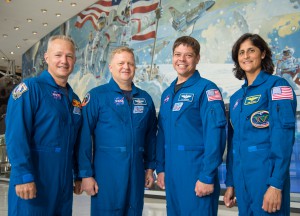 NASA’s Commercial Crew Program and its aerospace industry partners Boeing and SpaceX are on the eve of America’s return to human spaceflight launches. By the time the year closes, Boeing’s CST-100 Starliner and SpaceX’s Crew Dragon will be poised for the flight tests that allow our astronauts to travel to the International Space Station lifting off from Florida’s Space Coast.
NASA’s Commercial Crew Program and its aerospace industry partners Boeing and SpaceX are on the eve of America’s return to human spaceflight launches. By the time the year closes, Boeing’s CST-100 Starliner and SpaceX’s Crew Dragon will be poised for the flight tests that allow our astronauts to travel to the International Space Station lifting off from Florida’s Space Coast.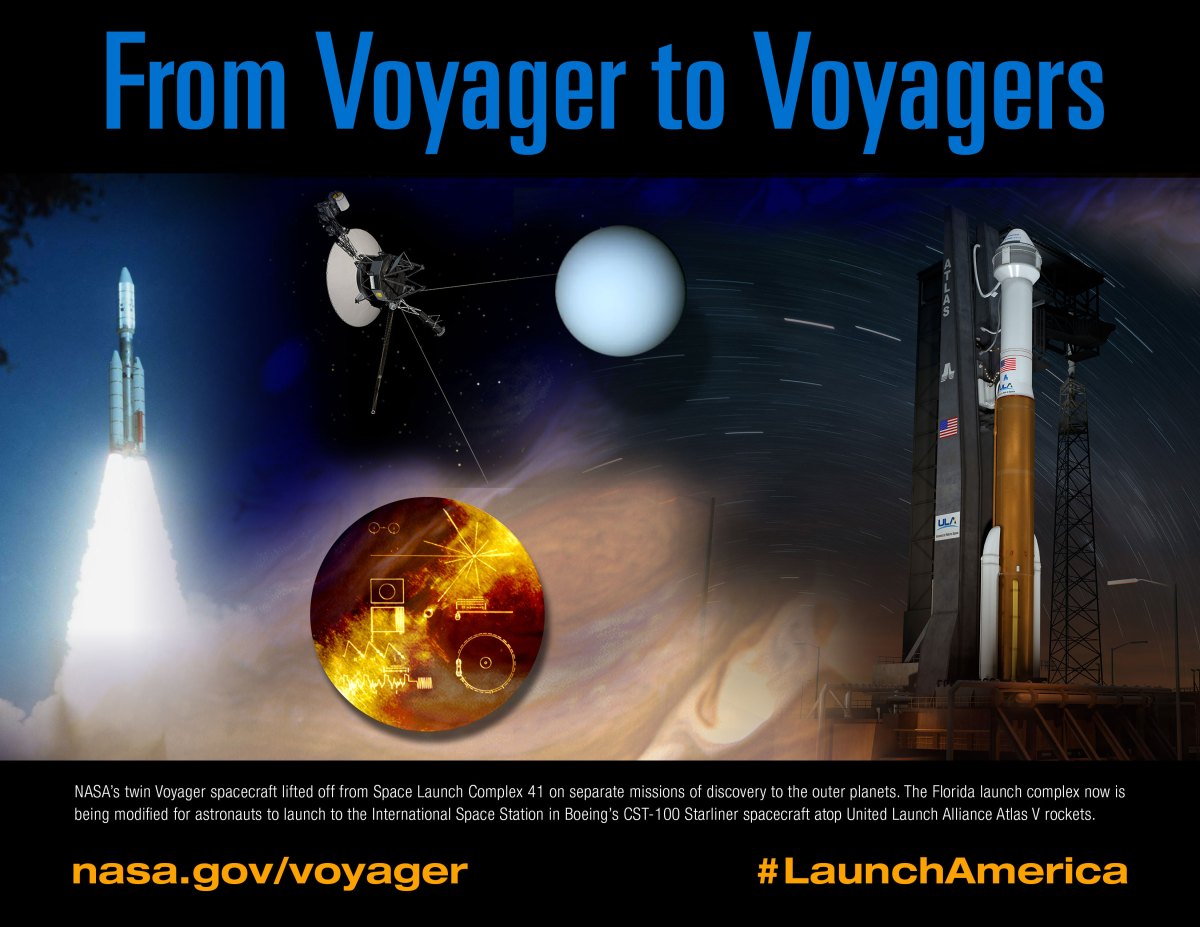

 Today, NASA Administrator Charlie Bolden blogged about the agency’s plan, vision and timetable for sending American astronauts to the Red Planet in the 2030s. By building a robust commercial market in low-Earth orbit, the agency is able to focus on simultaneously getting our astronauts to deep space.
Today, NASA Administrator Charlie Bolden blogged about the agency’s plan, vision and timetable for sending American astronauts to the Red Planet in the 2030s. By building a robust commercial market in low-Earth orbit, the agency is able to focus on simultaneously getting our astronauts to deep space.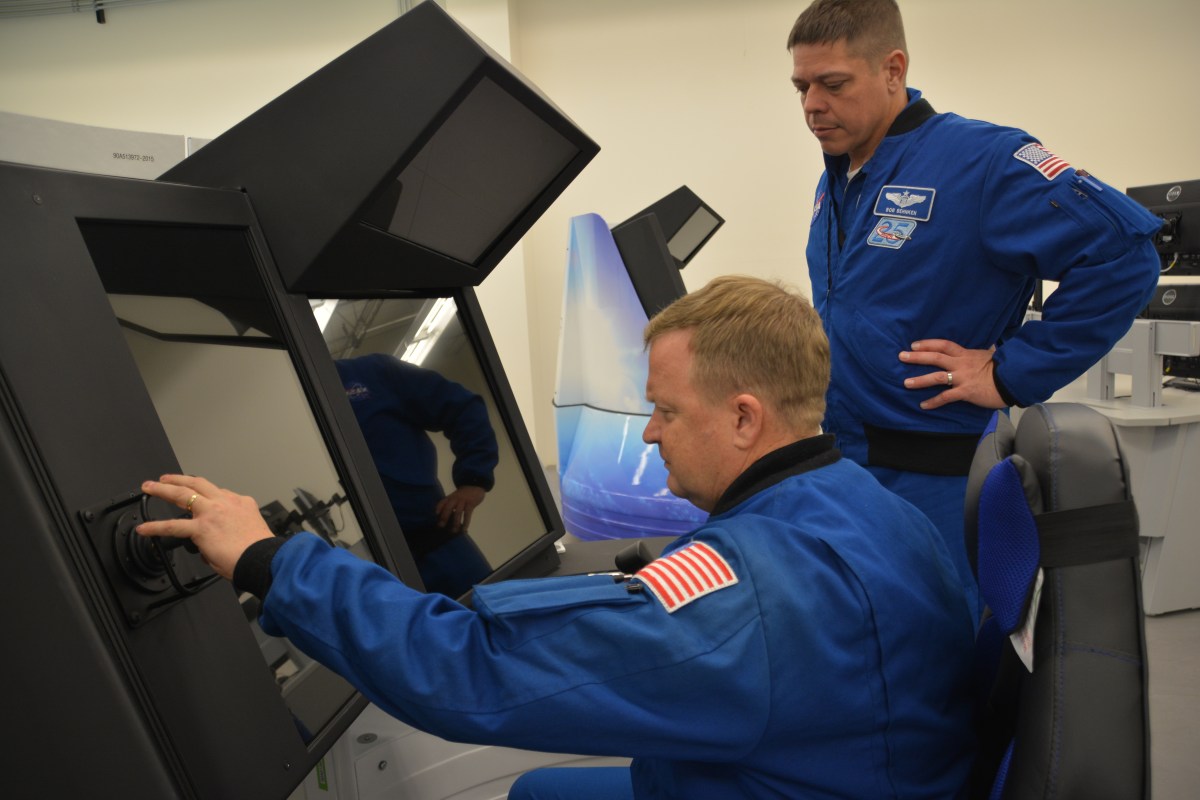
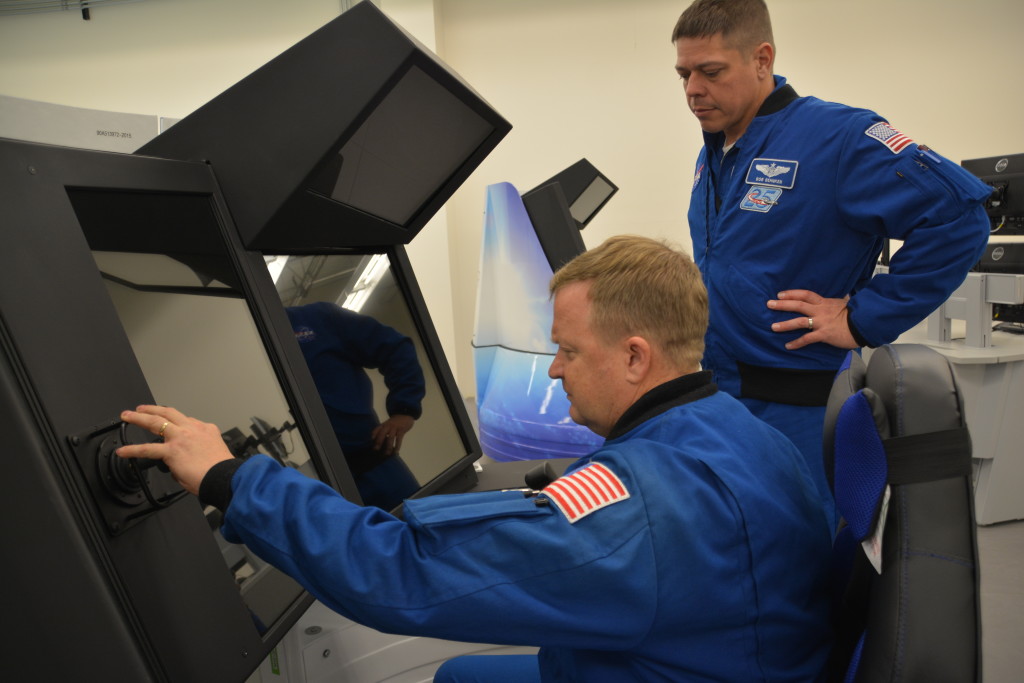
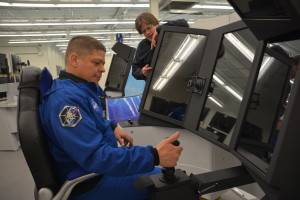 Commercial Crew astronauts Bob Behken and Eric Boe sat at the simulated controls of Boeing’s CST-100 Starliner recently as they evaluated sophisticated systems designed to train astronauts and mission controllers prior missions to the International Space Station. Behknen and Boe are two of four NASA astronauts, including Doug Hurley and Suni Williams selected to work closely with Boeing and SpaceX as the companies finalize their systems. Crews have not been assigned to specific missions or spacecraft, so the team is cross-training and aiding in development of both.
Commercial Crew astronauts Bob Behken and Eric Boe sat at the simulated controls of Boeing’s CST-100 Starliner recently as they evaluated sophisticated systems designed to train astronauts and mission controllers prior missions to the International Space Station. Behknen and Boe are two of four NASA astronauts, including Doug Hurley and Suni Williams selected to work closely with Boeing and SpaceX as the companies finalize their systems. Crews have not been assigned to specific missions or spacecraft, so the team is cross-training and aiding in development of both.